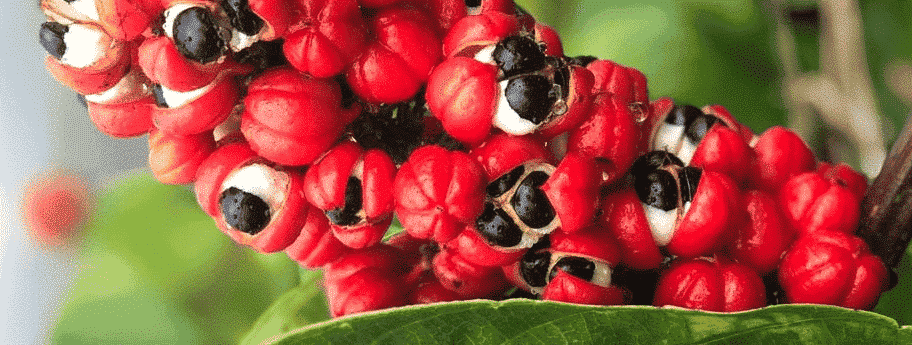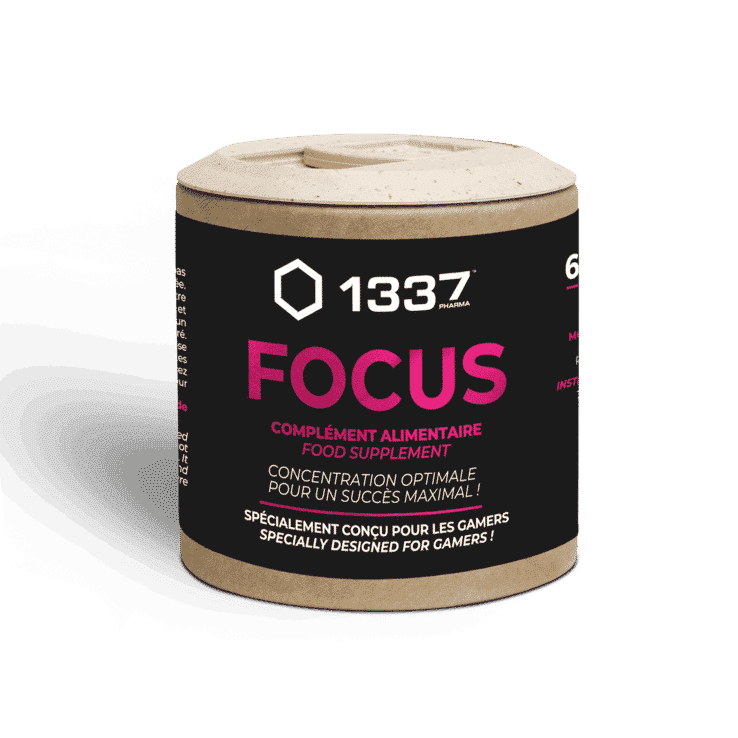Guarana
Ingredient
What is guarana?
Where does it come from?
Why is it used?
What are the benefits?
Bibliography
What is guarana?
A ripe guarana fruit is the size of a coffee berry. It looks like a human eye, with a red shell enclosing a black seed covered with a white aril.
Guarana extract is obtained by processing the seeds into powder (Schimpl et al., 2013). Amazonian tribes have used guarana for centuries for its therapeutic properties (Smith & Atroch, 2010)
It contains an impressive range of stimulants, such as caffeine, theophylline and theobromine Guarana also contains antioxidants, such as tannins, saponins and catechins (Bittencourt et al., 2013) Today, 70% of the Guarana produced is used by the beverage industry in soft and energy drinks, while the remaining 30% is processed into powder (Bittencourt et al., 2013)
Where does it come from?
Guarana is a Brazilian plant native to the Amazon basin. Also known as Paullinia cupana, it is a vine highly valued for its fruit.
Why is it used?
• May reduce fatigue and improve concentration
Guarana is best known as an ingredient in popular energy drinks.
It’s a great source of caffeine, which helps you focus and maintain your mental energy.
In fact, guarana seeds can contain four to six times more caffeine than coffee beans (da Silva et al., 2017)
Caffeine works by blocking the effects of adenosine, a compound that helps relax the brain. It binds to adenosine receptors, preventing their activation (Kennedy et al., 2008)
One study found that people who took vitamin supplements containing guarana felt less fatigued when performing multiple tests, compared to those who took a placebo. (Kennedy et al., 2008)
Interestingly, studies also show that guarana can reduce mental fatigue due to cancer treatment, without significant side effects (AB del Giglio et al., 2013; de Oliveira Campos et al., 2011; A. del Giglio & Giglio , 2015)
• Can relieve pain
Historically, guarana was used by tribes in the Amazon for pain relief.
The analgesic properties of guarana are due to its high caffeine content. Caffeine plays a role in pain management because it binds to adenosine receptors and blocks them.
Two of these receptors – A1 and A2a – are involved in stimulating the sensation of pain (Baratloo et al., 2016)
When caffeine binds to these receptors, it can reduce the sensation of pain.
This is one of the reasons caffeine is commonly found in many over-the-counter pain relievers.
Studies have shown that it can significantly enhance their effects (Derry et al., 2012)
• Can help you learn better
Research has shown that guarana can improve your ability to learn and remember.
One study looked at the effects of different doses of guarana on mood and learning. Those who received 37.5 mg or 75 mg of guarana had the best test results. (Haskell et al., 2007)
Those who took 37.5mg or 75mg of guarana had the best test results. Since low doses of guarana provide low doses of caffeine, it is believed that other compounds in guarana apart from caffeine, may be partially responsible (Haskell et al., 2007)
Another study compared guarana to ginseng, another brain-boosting compound.
Although both guarana and ginseng improved memory and performance on tests, people who received guarana paid more attention to their tasks and completed them faster. Additionally, animal studies have shown that guarana can improve memory (Espinola et al., 1997; Ruchel et al., 2017)

Discover other plants used in our products
Bibliography
1. Baratloo, A., Rouhipour, A., Forouzanfar, MM, Safari, S., Amiri, M., & Negida, A. (2016). The Role of Caffeine in Pain Management: A Brief Literature Review. Anesthesiology and Pain Medicine, 6(3), e33193. https://doi.org/10.5812/aapm.33193
2. Bittencourt, LS, Machado, DC, Machado, MM, Dos Santos, GFF, Algarve, TD, Marinovic, DR, Ribeiro, EE, Soares, FAA, Barbisan, F., Athayde, ML, & Cruz, IBM (2013 ). The protective effects of guaraná extract (Paullinia cupana) on fibroblast NIH-3T3 cells exposed to sodium nitroprusside . Food and Chemical Toxicology, 53, 119-125. https://doi.org/10.1016/j.fct.2012.11.041
3. da Silva, GS, Canuto, KM, Ribeiro, PRV, de Brito, ES, Nascimento, MM, Zocolo, GJ, Coutinho, JP, & de Jesus, RM (2017). Chemical profiling of guarana seeds (Paullinia cupana) from different geographical origins using UPLC-QTOF-MS combined with chemometrics . Food Research International, 102, 700-709. https://doi.org/10.1016/j.foodres.2017.09.055
4. del Giglio, AB, Cubero, D. de IG, Lerner, TG, Guariento, RT, de Azevedo, RGS, Paiva, H., Goldman, C., Carelli, B., Cruz, FM, Schindler, F. , Pianowski, L., de Matos, LL, & del Giglio, A. (2013). Purified dry extract of Paullinia cupana (guaraná) (PC-18) for chemotherapy-related fatigue in patients with solid tumors: An early discontinuation study. Journal of Dietary Supplements, 10(4), 325-334. https://doi.org/10.3109/19390211.2013.830676
5. de Oliveira Campos, MP, Riechelmann, R., Martins, LC, Hassan, BJ, Casa, FBA, & Del Giglio, A. (2011). Guarana (Paullinia cupana) improves fatigue in breast cancer patients undergoing systemic chemotherapy. Journal of Alternative and Complementary Medicine (New York, NY), 17(6), 505-512. https://doi.org/10.1089/acm.2010.0571
6. Derry, CJ, Derry, S., & Moore, RA (2012). Caffeine as an analgesic adjuvant for acute pain in adults. The Cochrane Database of Systematic Reviews, 3, CD009281. https://doi.org/10.1002/14651858.CD009281.pub2
7. Espinola, EB, Dias, RF, Mattei, R., & Carlini, EA (1997). Pharmacological activity of Guarana (Paullinia cupana Mart.) in laboratory animals . Journal of Ethnopharmacology, 55(3), 223-229.
https://doi.org/10.1016/s0378-8741(96)01506-1
8. Giglio, A. del, & Giglio, A. del. (2015). Chapter 6—Using Paullinia cupana (Guarana) to Treat Fatigue and Other Symptoms of Cancer and Cancer Treatment. In RR Watson & VR Preedy (Eds.), Bioactive Nutraceuticals and Dietary Supplements in Neurological and Brain Disease (pp. 57-63). Academic Press. https://doi.org/10.1016/B978-0-12-411462-3.00006-0
9. Haskell, CF, Kennedy, DO, Wesnes, KA, Milne, AL, & Scholey, AB (2007). Double-blind, placebo- controlled, multi-dose evaluation of the acute behavioral effects of guarana in humans. Journal of Psychopharmacology (Oxford, England) , 21(1), 65-70. https://doi.org/10.1177/0269881106063815
10. Kennedy, DO, Haskell, CF, Robertson, B., Reay, J., Brewster-Maund, C., Luedemann, J., Maggini, S., Ruf, M., Zangara, A., & Scholey, AB (2008). Improved cognitive performance and mental fatigue following a multi-vitamin and mineral supplement with added guarana (Paullinia cupana) . Appetite, 50(2-3), 506-513. https://doi.org/10.1016/j.appet.2007.10.007
11. Ruchel, JB, Braun, JBS, Adefegha, SA, Guedes Manzoni, A., Abdalla, FH, de Oliveira, JS, Trelles, K., Signor, C., Lopes, STA, da Silva, CB, Castilhos, LG, Rubin, MA, & Leal, DBR (2017). Guarana (Paullinia cupana) ameliorates memory impairment and modulates acetylcholinesterase activity in Poloxamer- 407-induced hyperlipidemia in rat brain . Physiology & Behavior, 168, 11‐19. https://doi.org/10.1016/j.physbeh.2016.10.003
12. Schimpl, FC, da Silva, JF, Gonçalves, JF de C., & Mazzafera, P. (2013). Guarana: Revisiting a highly caffeinated plant from the Amazon. Journal of Ethnopharmacology, 150(1), 14-31. https://doi.org/10.1016/j.jep.2013.08.023
13. Smith, N., & Atroch, AL (2010). Guaraná’s Journey from Regional Tonic to Aphrodisiac and Global Energy Drink. Evidence-Based Complementary and Alternative Medicine: ECAM, 7(3), 279-282.
https://doi.org/10.1093/ecam/nem162

